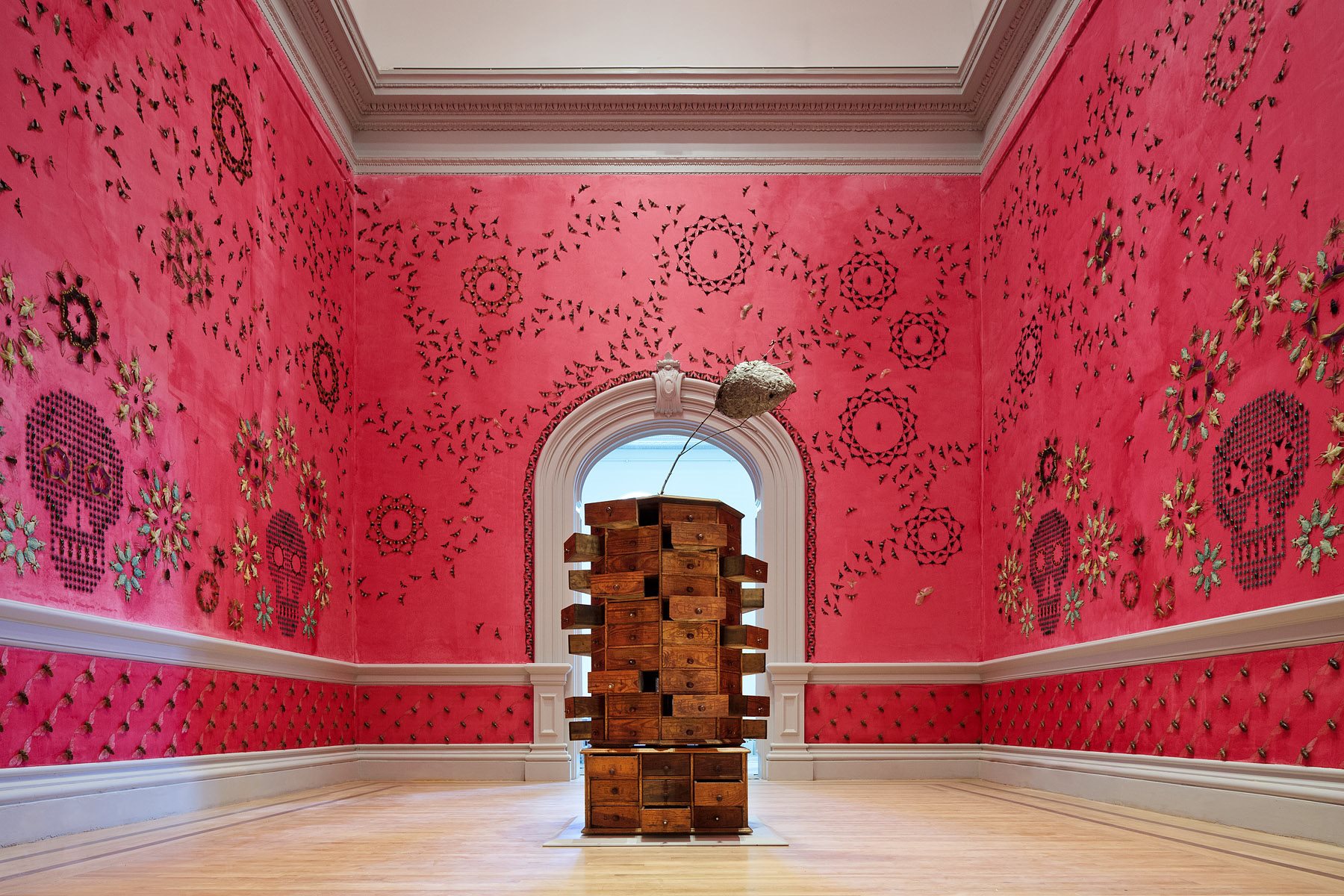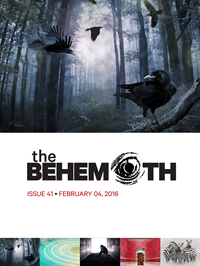Wonder in Washington
The newly renovated Renwick Gallery reopens with massive, immersive installations. /
Wonder. It first came to mind as our plane flew over the East Coast’s record snowfall and landed at Washington Reagan airport.
Slip-sliding into a waiting taxi, my wife and I were driven past ranges of shoulder-high snow near manmade wonders like the Jefferson and Washington memorials, then past the White House to our hotel just off of historic Lafayette Square.
Once settled in, and with a couple of hours to kill before our evening’s event, Judy and I thought we’d drink a bit more deeply of the capital’s architecture. Our stroll immediately past President Obama’s residence brought us to a recently polished facet of the Smithsonian building-expanse: the Renwick Gallery.
America’s first building to be designed specifically as an art museum, the 160-year-old Renwick is an easily forgotten artistic gem, positioned as it is along a line of other attention-getting historic row houses.
But it was the banner emboldened with a single word, “WONDER,” draped across the recently refurbished facade that forced our attention. And our attendance.
Once inside, we were visually accosted by nine galleries full of massive, unexpected treasures. Unexpected because of the media used by the nine artists whose individual vision filled each room: index cards, toothpicks, scotch-tape, ground-up tires, wire, insects—lots of insects! Together, the installations turned the building itself into one big work of art.
The largest exhibits naturally demanded the most time to experience and drew the most awe from attendees.
Inspired by a map from the National Oceanic and Atmospheric Administration colorfully depicting the energy released during the Tohuku earthquake and tsunami of 2011, Janet Echelman translated these readings into a massive, undulating net hung across the ceiling of the Renwick’s Grand Salon. (Viewers were encouraged to lie on the floor and look up at this man-made “tsunami”—all the more adding to the sense of wonder.)
Equally impressive—and doubly unsettling—was the so-called “Bug Room.” The work of Jennifer Angus, this gallery’s four walls are covered with five thousand dead, dried insects arranged in patterns reminiscent of “Day of the Dead” motifs, all resting on a backdrop of a pink wash made from a Mexican insect that lives on prickly pear cacti.
As in the case of both Echelman’s and Angus’s artwork, the approachability of the Renwick seems to bring the art to you. And thus the power of each gallery presentation—power added to by an assortment of quotes subtly complementing each rendition. One by St. Augustine near the gallery showcasing Tara Donavon’s Cappadocian-like towers made out of everyday office materials particularly caught my attention.
“Men go forth to marvel at the heights of mountains, at the huge waves of the sea, the broad flow of the rivers, the vastness of the oceans, the orbits of the stars, and they neglect to marvel at themselves.”
No chance for such neglect here. That each artist could see beyond the mundane (or, in the case of the tsunami-inspired piece, the terror) and bring forth beauty—and wonderment—speaks wonderfully of God’s own Creation highpoint.
We left hoping that our own sight might have been sharpened a little by our chance find. Or, as another gallery quote put it, we left hoping that we might “pay better attention to our surroundings, permitting the everyday to catch us up again.”
Harold Smith is president and CEO of Christianity Today. The Wonder installation will be on exhibit through May 8, 2016.
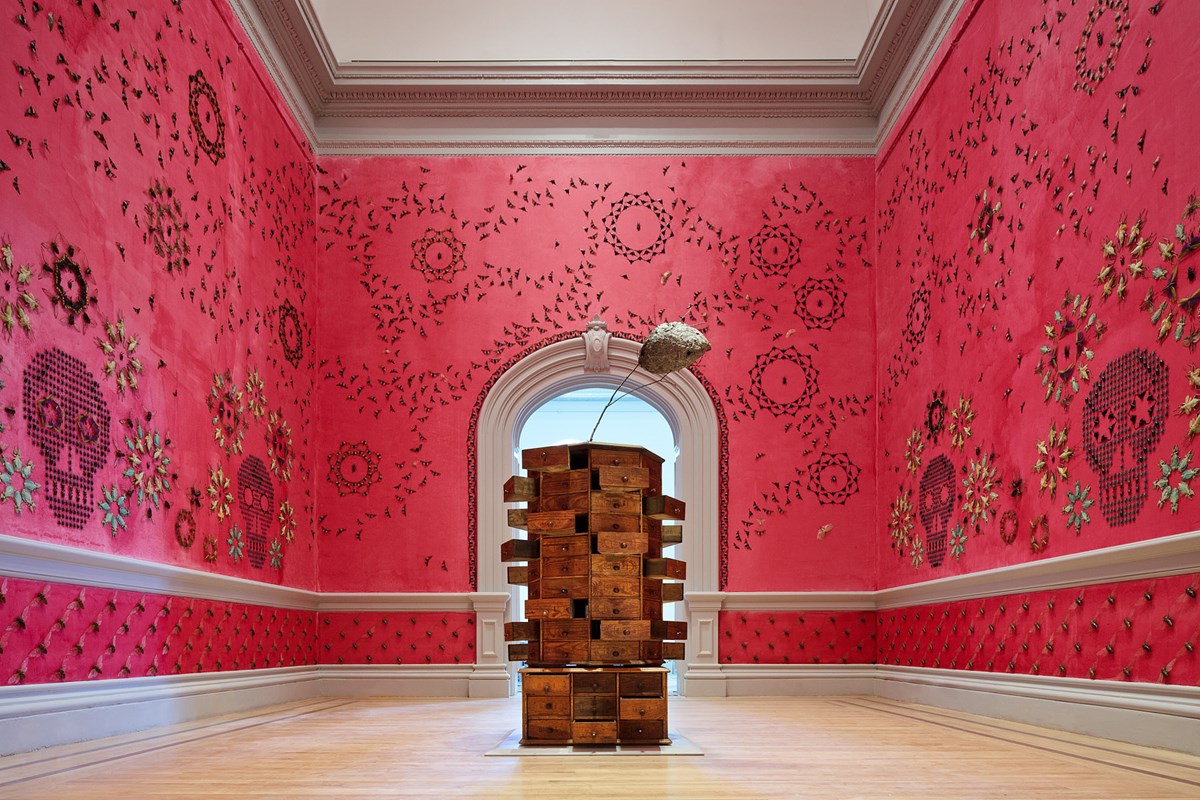
Jennifer Angus’s “In the Midnight Garden” positions 5,000 insects to evoke decorative wallpaper. Even the pink background is insect-derived cochineal dye.
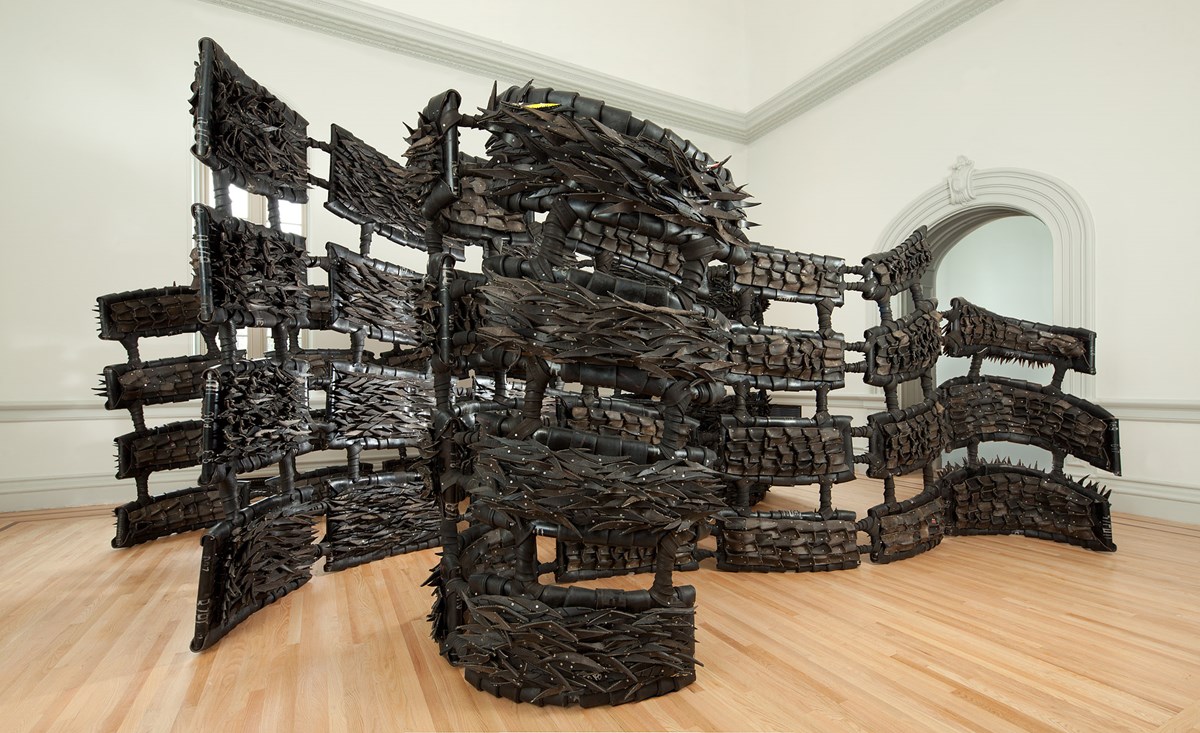
Chakaia Booker’s “Anonymous Donor” invites the visitor to walk through ten-foot walls made from old tires, cut, shredded, folded, and reworked.
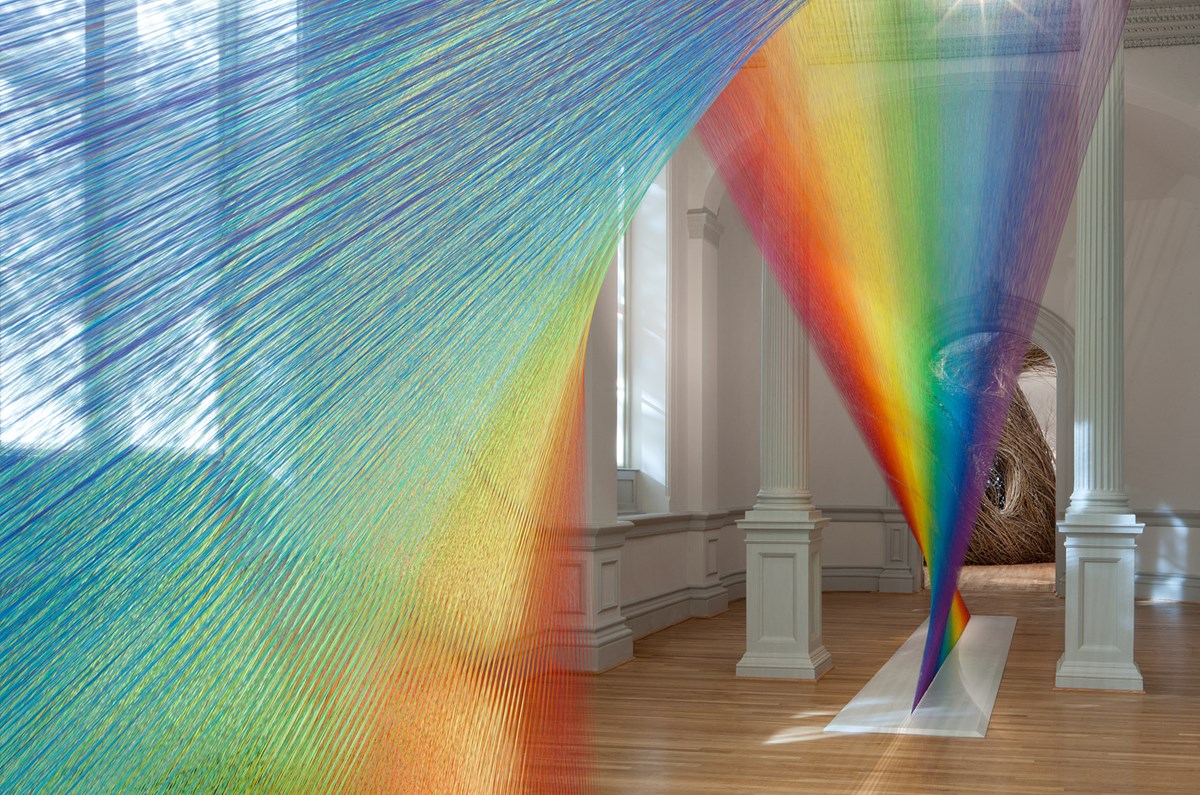
Gabriel Dawe used almost 60 miles of thread to create “Plexus A1,” a visual spectrum named for the body’s network of nerves and vessels.
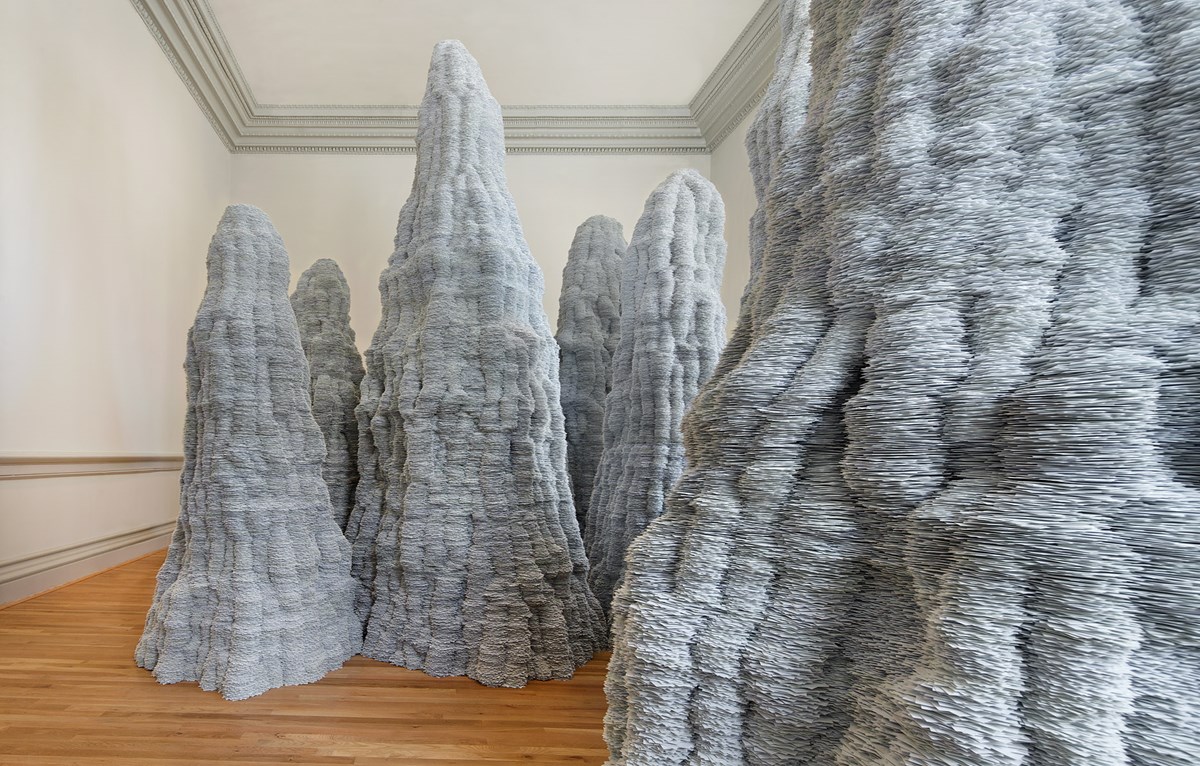
The ten fairy chimneys and hoodoos in Tara Donovan’s “Untitled” are made from about a million index cards.
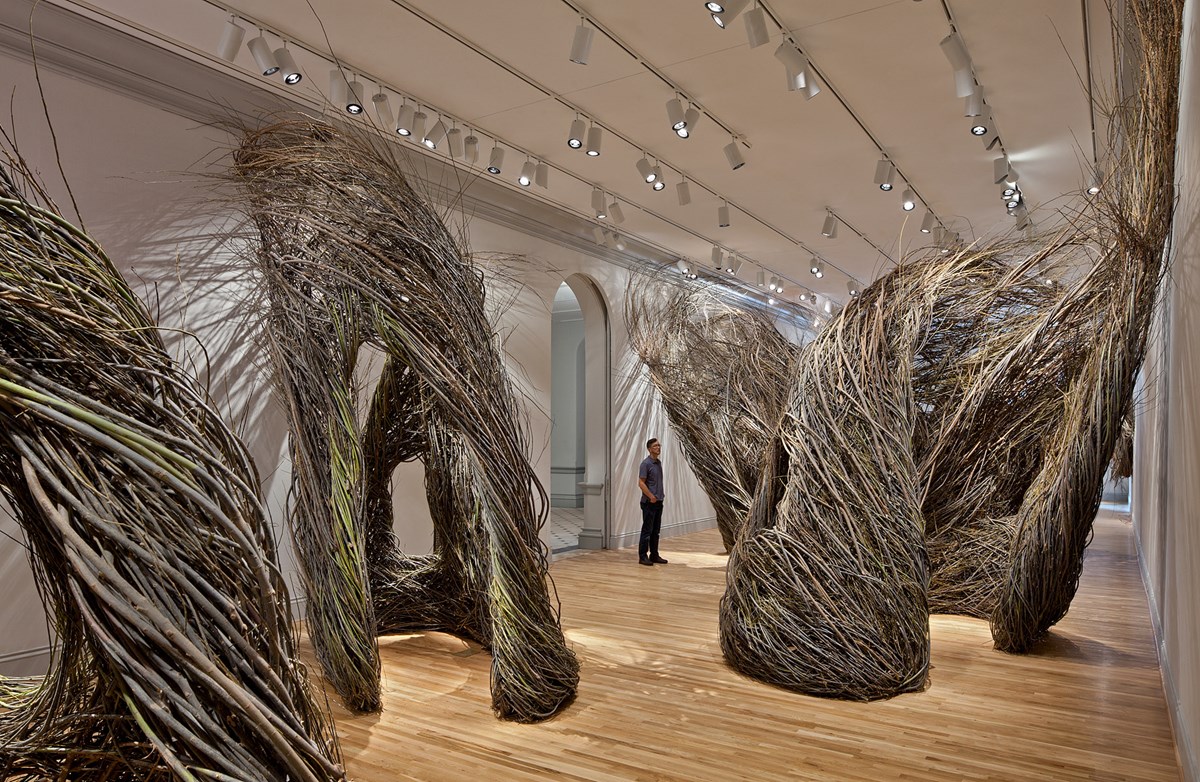
Patrick Dougherty searches the world for bendable branches and sticks for his sculptures, such as the Renwick’s “Shindig.”
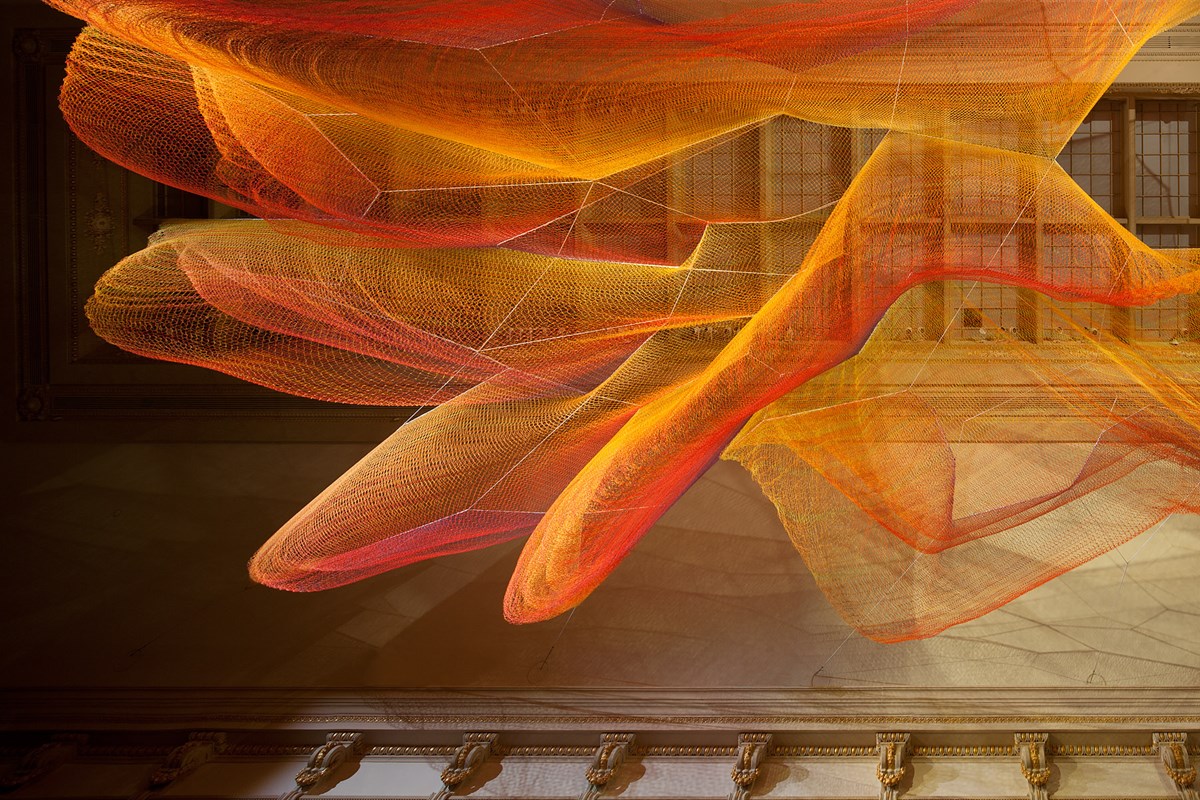
Janet Echelman’s “1.8” invites you to lie down to view a representation of the energy released by the 2011 Tohoku earthquake and tsunami. The carpet is partly made from old fishing nets. The installation’s name draws from the quake shortening the day by 1.8 millionths of a second as it shifted the earth on its axis.
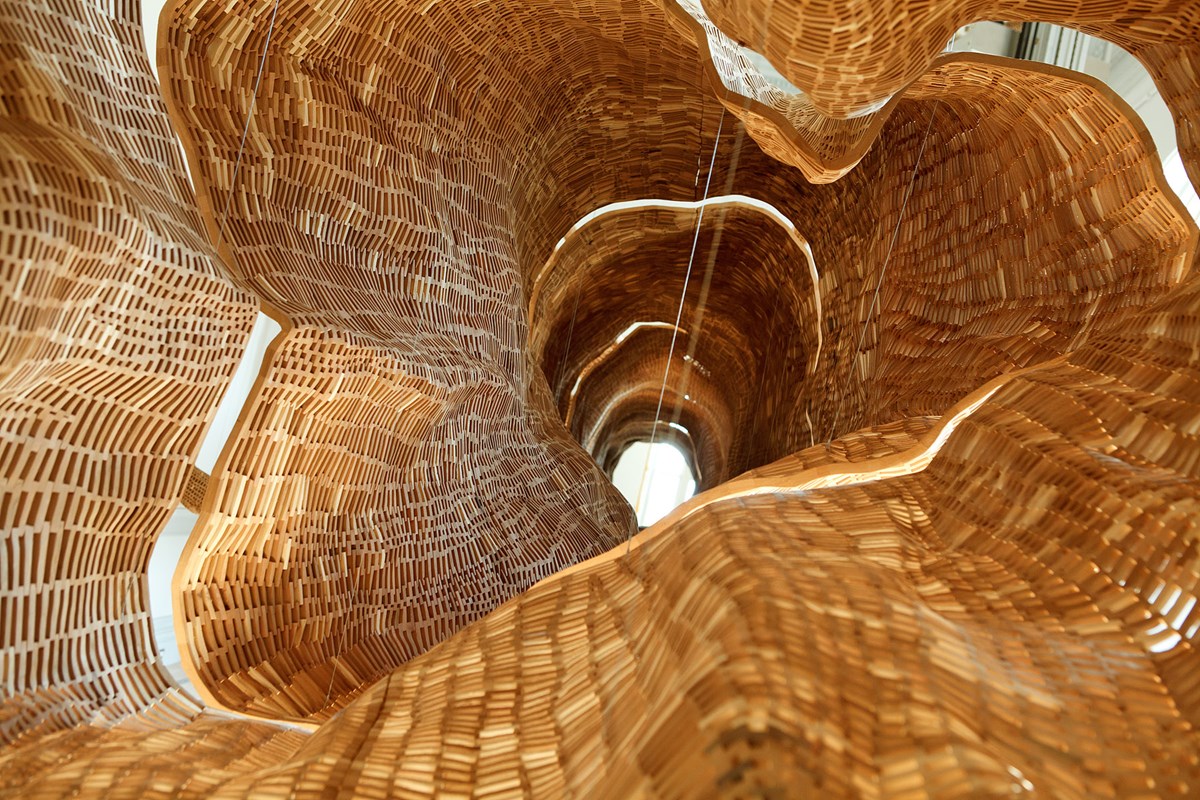
When John Grade’s “Middle Fork (Cascades)” leaves the Renwick Gallery at the close of the Wonder Exhibit, it will be taken to the Cascade Mountains and placed next to the original hemlock tree that served as its model.
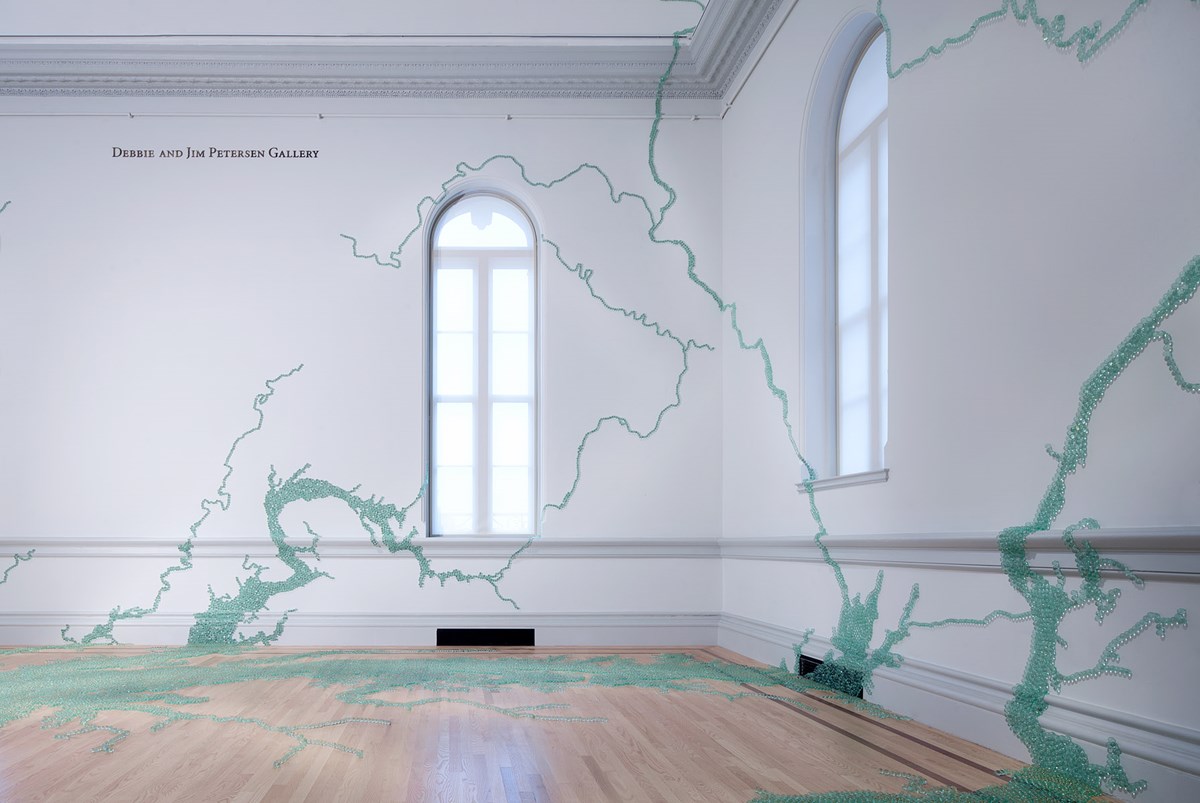
Maya Lin’s “Folding the Chesapeake” models the estuary with 54,000 glass marbles.
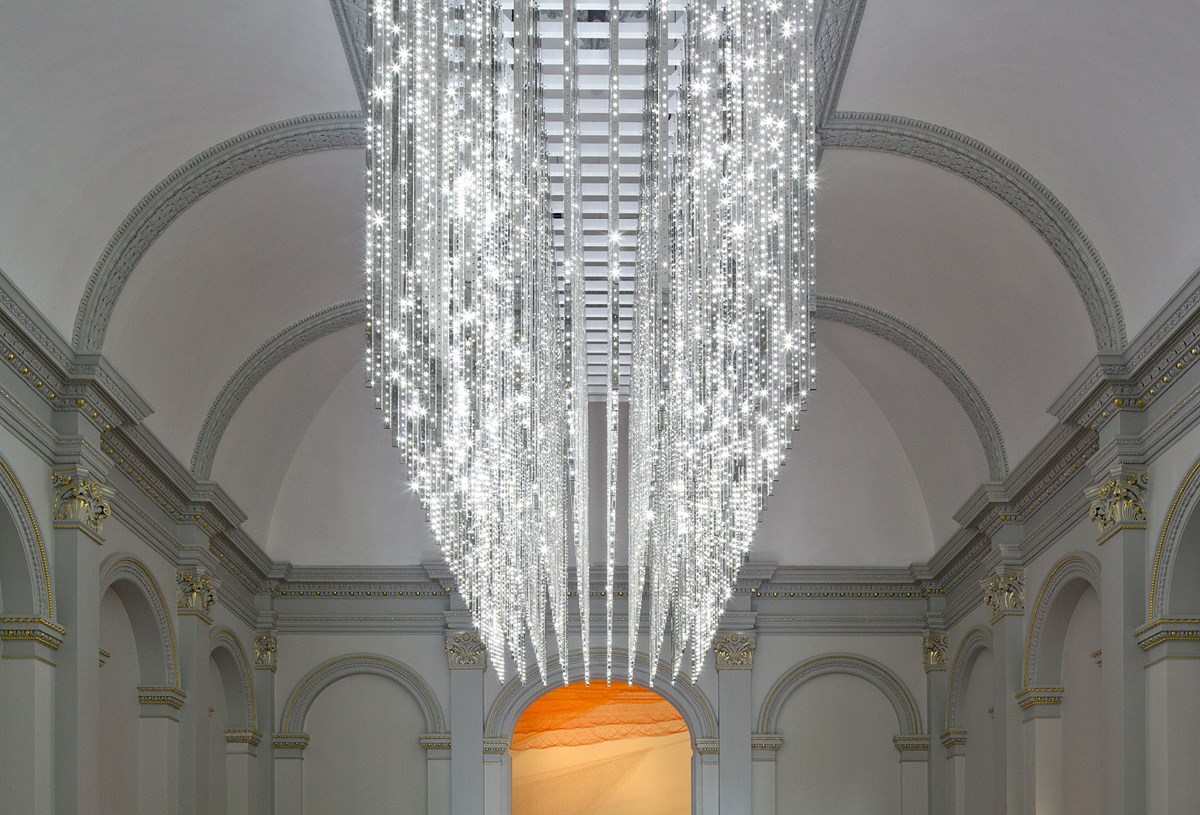
The lighting sequences in “Volume (Renwick)” by Leo Villareal, which uses 23,000 LED bulbs in 320 steel rods, never repeat.
Also in this Issue
Issue 41 / February 4, 2016- Editor's Note from February 04, 2016
Issue 41: Crow funerals, the strangeness of light, wonder at the Renwick, and asking God rightly. /
- Funeral for a Feathered Friend
Researchers are discovering why crows gather when one of them dies. Are they mourning or just learning? /
- How Light Changed the Rules of Opposites
North couldn’t be south. An odd number couldn’t be even. And a particle couldn’t be a wave. Then we saw the light. /
- You’re Praying Wrong
Ask, and it will be given you, Jesus promised. Crave, and you’ll kill for it, James warned. /
- Wonder on the Web
Issue 41: Links to amazing stuff.


